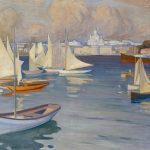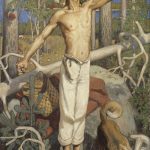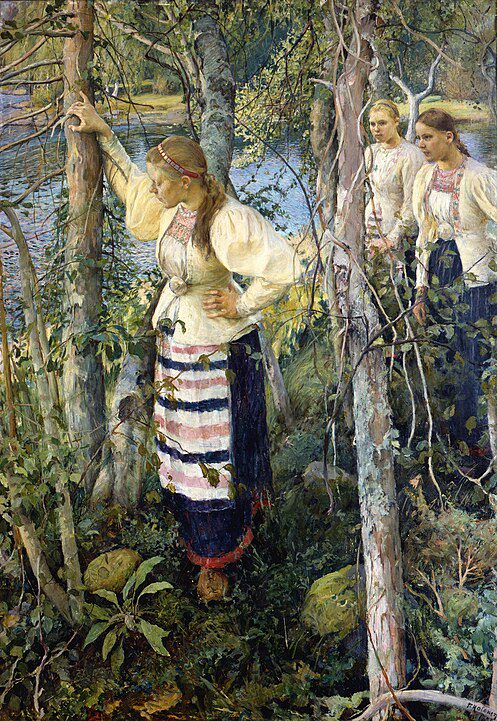
Pekka Halonen, a name synonymous with the Finnish National Romanticism movement, is celebrated for his captivating and serene depictions of the Finnish landscape. Born on September 23, 1865, in Lapinlahti, Finland, Halonen was the third of eight children in a modest rural family. His father, Olli Halonen, was a farmer and craftsman, and his mother, Wilhelmina Halonen, was known for her weaving. This rural upbringing deeply ingrained in him a profound love for nature, a theme that would pervade his art throughout his life.
Halonen’s artistic talent was apparent from an early age. Encouraged by his parents, he pursued formal education at the Kuopio Lyceum, where his skills began to flourish. Recognizing his potential, Halonen moved to Helsinki in 1886 to study at the Drawing School of the Finnish Art Society. Here, he was mentored by notable Finnish artists like Fredrik Ahlstedt and Adolf von Becker, who helped refine his technique and broaden his artistic horizons.
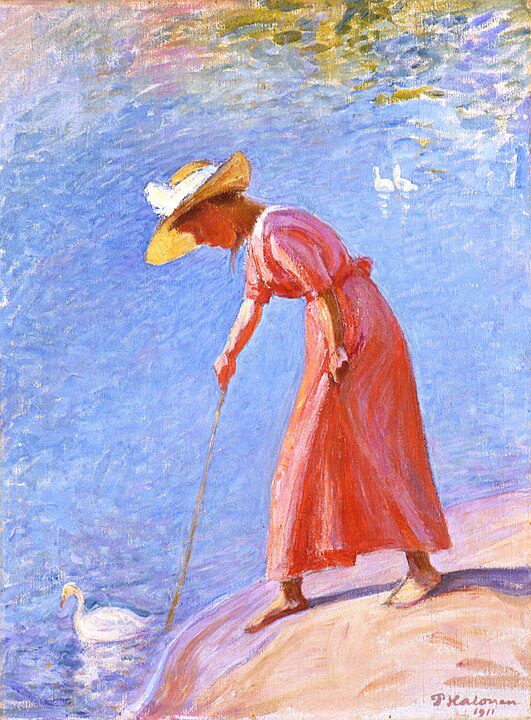
A pivotal moment in Halonen’s career came in 1890 when he received a grant to study in Paris. The vibrant art scene in Paris offered him new perspectives and influences. He enrolled at the Académie Julian, where he studied under renowned artists Jules Lefebvre and Tony Robert-Fleury. The exposure to French Impressionism and Symbolism had a lasting impact on his style, although he remained firmly rooted in the themes of Finnish nature and folklore.
Best Friends
During his time in Paris, Halonen formed a close friendship with another Finnish artist, Akseli Gallen-Kallela. Together, they explored the countryside, capturing its essence through plein air painting. This practice of painting outdoors allowed Halonen to study light, color, and the changing moods of nature directly from life, rather than relying on memory or sketches. This approach became a hallmark of his work.
After returning to Finland in 1895, Halonen settled in Tuusula, a small town north of Helsinki. There, he built his home and studio, Halosenniemi, on the shores of Lake Tuusula. The house, designed in the National Romantic style, became a cultural hub for Finnish artists, writers, and musicians. Halonen’s commitment to capturing the essence of Finnish nature resonated with the burgeoning sense of national identity among his contemporaries.
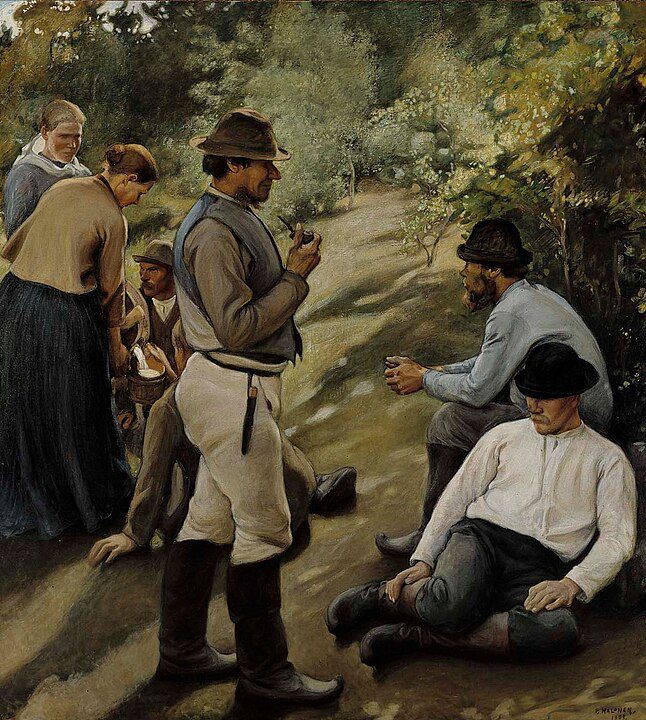
Halonen’s paintings often depict the Finnish landscape in all its seasonal glory. Winter scenes, in particular, showcase his ability to render the subtle interplay of light and shadow on snow. His use of a muted color palette and delicate brushwork conveys a sense of tranquility and timelessness. Works such as “Winter Landscape” and “Forest in Winter” exemplify his mastery in capturing the serene beauty of Finland’s snowy forests.
In addition to landscapes, Halonen also painted portraits and genre scenes that reflect the lives of ordinary Finns. His portraits are characterized by their emotional depth and meticulous attention to detail. He often portrayed his subjects in natural settings, further emphasizing his connection to the environment.
Finnish to The Core
Halonen’s art was not just an aesthetic pursuit but also a reflection of his deep-seated beliefs. He was an advocate for the preservation of Finnish culture and traditions, which were under threat from increasing modernization and foreign influences. Through his art, he sought to celebrate and preserve the unique character of Finnish life and landscape.
Throughout his career, Halonen received numerous accolades and recognition for his contributions to Finnish art. He participated in several international exhibitions, including the Paris World Fair in 1900, where his work garnered critical acclaim. His paintings are now housed in major Finnish museums, such as the Ateneum in Helsinki, and are cherished as national treasures.
Despite his success, Halonen remained deeply connected to his roots. He continued to live and work in Tuusula, drawing inspiration from the surrounding landscape until his death on December 1, 1933. His legacy endures not only through his evocative paintings but also through Halosenniemi, which has been preserved as a museum dedicated to his life and work.
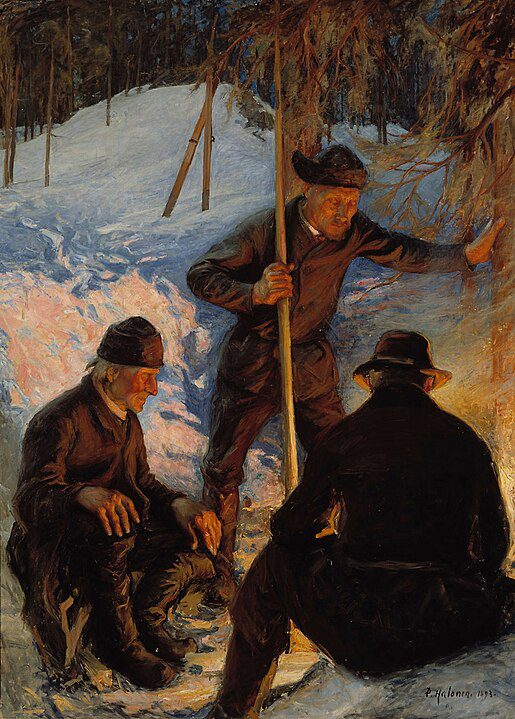
Pekka Halonen’s art invites us to pause and appreciate the quiet beauty of the natural world. His ability to capture the soul of the Finnish landscape has cemented his place as one of Finland’s most beloved artists. Through his paintings, we are reminded of the enduring power of nature and the profound connection we share with it.


